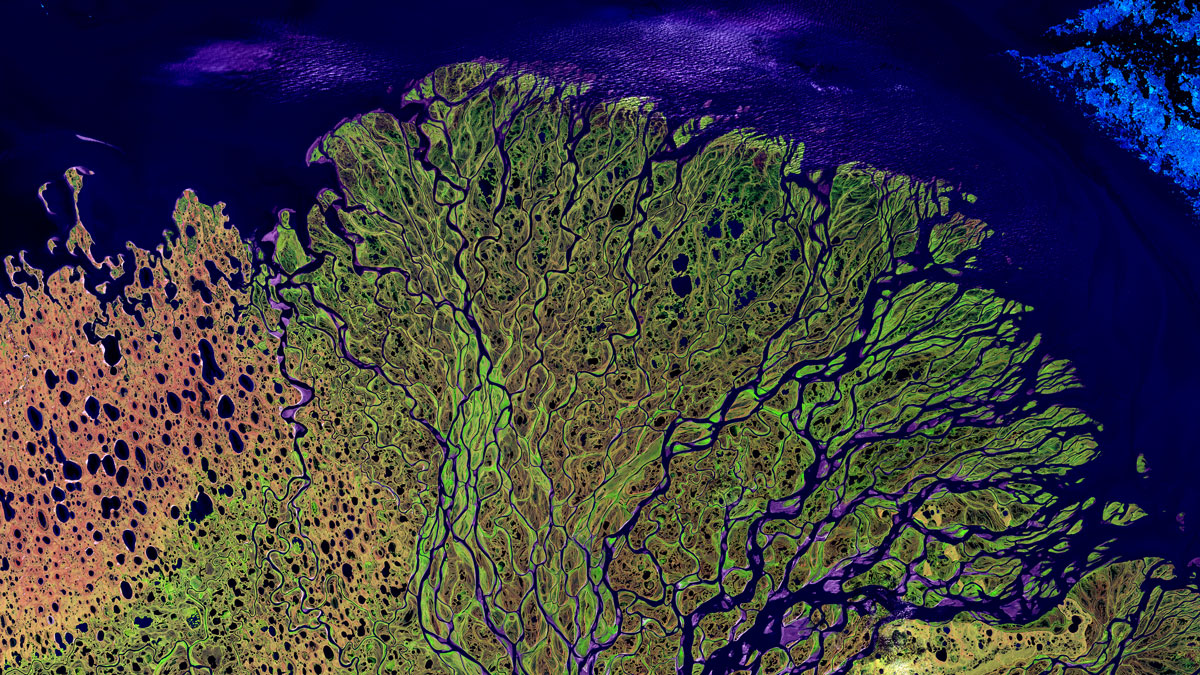Source: Global Biogeochemical Cycles
Human activity is shifting the type of nitrogen flowing out of Arctic rivers and into the Arctic Ocean, a new publication shows. The amount of organic nitrogen, which is derived from living things, is going up. Meanwhile, the amount of inorganic nitrogen, which is produced from nitrogen in the air through chemical reactions, is going down.
Ruyle et al. sampled water from sites at six Arctic rivers: the Kolyma, Lena, Ob, and Yenisey in Russia; the Mackenzie in Canada; and the Yukon in the United States. Together, these watersheds cover about two thirds of the land area that drains into the Arctic Ocean. From 2003 to 2023, researchers collected samples from the rivers five to six times per year and measured the abundance of various forms of nitrogen. In four of the six rivers (Lena, Ob, Yenisey, Mackenzie), the ratio of dissolved organic nitrogen to total nitrogen (i.e., the sum of organic and inorganic nitrogen) increased significantly during that period at a rate between 1% and 2% per year.
The team applied newly developed models to these measurements to identify environmental and climate conditions associated with changes in nitrogen composition. The amount of water flowing through rivers, the extent to which surrounding permafrost has thawed, and the prevalence of burned landscape are all key drivers of the shift from inorganic to organic nitrogen, they found. Climate change is intensifying all of these conditions, so the trend is likely to continue.
Photosynthetic organisms such as algae and cyanobacteria typically use inorganic nitrogen to fuel their growth, whereas organisms that eat other living things can use organic nitrogen. The microbes that cause harmful algae blooms are typically photosynthetic.
So in the coming years, a decrease in inorganic nitrogen in these rivers could lead to fewer harmful blooms in coastal regions where river inputs are most important. However, the overall effects of a shift from inorganic to organic nitrogen are not completely understood, and the authors suggest the shifts should be the subject of future research. (Global Biogeochemical Cycles, https://doi.org/10.1029/2025GB008639, 2025)
—Saima May Sidik (@saimamay.bsky.social), Science Writer


